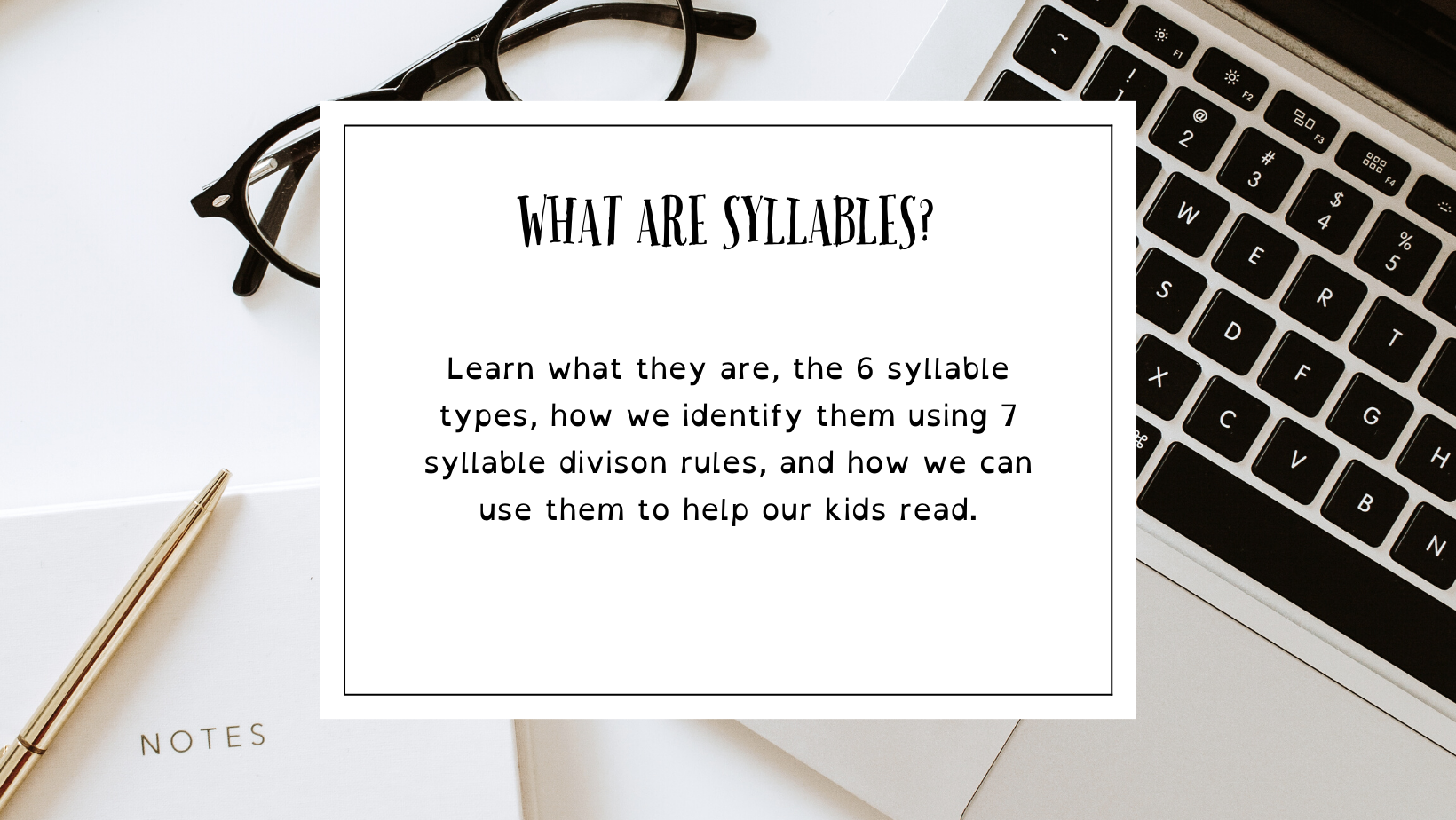When I was a paraeducator in a first grade classroom, my students struggled with syllables. Lots of kids do. My son did too. They're easily confused with the sounds in a word because teachers often tell them to clap to count syllables. But where do you clap? There's a better way, and we'll get to that, but first...
What is a syllable?
A syllable is a unit of sound with one vowel sound. It is a word or part of a word with one and only one vowel sound (could be more than one letter but makes one vowel sound).
How do we identify syllables in words?
If a syllable only has one vowel sound, we're looking or listening for the vowel sound. But what is a vowel? As children, we were taught that vowels are a, e, i, o, u, and sometimes y, but it actually goes deeper than that. Acoording to Uncovering the Logic of English by Denise Eide, "A vowel is a sound that is produced when the motuth is open, and the sound is not blocked by the lips, tongue, or teeth. To say a vowel sound, we must open our mouths. It is this opening that forms syllables."
Clapping does not help us identify when our mouth opens. That's why when I'm teaching new readers how to identify syllables, I like to have them hold their chin in their hands with their elbows on the table when they say a word for syllable division. In this way, they can feel when they're mouth moves and identify the number of syllables more easily.
When reading a written word, we can find the vowel sounds within the word, putting our fingers on them and use our syllable division rules.
There are RULES for syllable division?!
That's right. If you're like me, you weren't taught this, but it makes learning to read SO much easier. Learning these rules together can also make it easier for you to read new and unfamiliar words. (Like in that fantasy book you've been planning to read...)
- Compound Word rule: Divide compound words (two words that combine to create a new word) into smaller words. Example: Cobweb: cob web
- Two Consonant Rule: If there are two consonants between the vowel sounds, we usually divide between the consonants. Example: Napkin: nap kin
- One Consonant Rule: If there is one consonant between the vowels sounds, we usually divide before the consonant. If that doesn't make a real word, be flexible and try dividing after the consonant. Examples: camel cam camel; cabin: cab in
- Two Vowel Rule: When two vowels are next to each other, divide between them. Example: poet: po et
- Consonant + le Syllable Rule: When a word ends in a consonant + le syllable, count back three letters from the end and divide. Example: candle can dle
- Suffixes Rule: Consonant suffixes form their own syllables (except suffix s). Vowel suffixes usually form ther own syllables but often grab the preceding consonant. Example: sadness: sad ness; swimmer; swim mer
- Prefixes Rule: Divide after a prefix Example: mistake; mis take
But wait... there are also 6 syllable types. What are they and why do we teach them?
That's right; there are also 6 syllable types to learn, and by teaching these syllable types to our kids, they can chunk longer words into smaller words to decode. It becomes a word attack strategy. Learning syllables helps our kids become better readers AND spellers. (Side note: schools generally don't teach these, but it makes learning to read SO much easier!)
- Closed Syllables: These are the most common syllables. These syllalbes end in a cosonant, and the vowel is short. Example rabbit; rab bit
- Open Syllables: These syllables end in a vowel, and the vowel is long. Example: robot; ro bot
- Vowel + Consosnant + e (VCe, sometimes called magic e or silent e) Syllables: These syllables have a long vowel sound and end with a silent e. Example: cupcake; cup cake
- Vowel Team Syllables: These syllables are spelled with two vowels next to each other that say one vowel sound. Example: teacup; tea cup
- R-Controlled Syllables: These syllables have a vowel followed by the letter r (ar, er, ir, ur, or), and the letter r affects how the vowel sound. Example: burger; bur ger
- Consonant + le Syllables: These syllables have a consonant followed by -le at the end of the word. Example: little; lit tle
How can we use this knowledge to help our kids read?
Is your child stuck on a tricky word? Get out the whiteboard and write the tricky word. Ask your child to label the vowels and consonants. Use the syllable division rules. What each syllable using the syllable types, then read them together. No more guessing words!
But don't take my word for it. There are plenty of teachers who have written blogs on syllable division using the science of reading and include multisensory activities to practice syllable division. Linked below are a few. Happy reading!
Questions? Send me an e-mail at aoife@thereadersdropinn.com, and I'll happily answer it personally.


